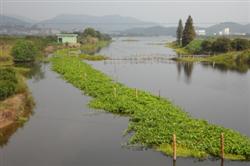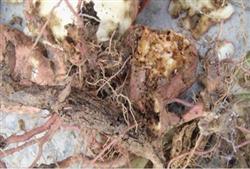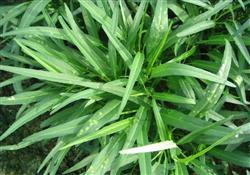Measures to prevent diseases and insect pests of asparagus

The main contents are as follows: 1. Select pure, high-quality solid and excellent varieties, and buy improved seeds from reliable seed departments. 2. Select suitable plots for planting. The sandy loam soil which is rich in organic matter, strong water and fertility conservation and good drainage and irrigation conditions is suitable, the soil acidity is neutral or slightly acidic, and clay and sandy soil planting is avoided. 3. Adjust the suitable temperature. Celery is a cold-tolerant vegetable, which requires cold and humid environmental conditions. Celery is cultivated in the greenhouse, the temperature is 15-23 ℃ during the day, the highest temperature is not more than 25 ℃, the highest is about 10 ℃ at night, and not less than 5 ℃. The temperature in overcast, rain, snow and wind days is lower, but not too low to prevent frost injury and early bolting. Proper ventilation according to humidity can reduce air humidity, reduce diseases, assimilate use, reduce respiratory consumption, and enrich and enlarge petioles. 4. Timely and appropriate amount of water and fertilizer management. The base fertilizer is fully applied and spread evenly, about 5000 kg of high-quality mature organic fertilizer is applied every 667m2, and it is best to add 100,200kg of fermented chicken manure or 15kg of diammonium phosphate, and extract seedling fertilizer after planting slow seedlings. during the growing period, topdressing is mainly quick-acting nitrogen fertilizer combined with potash fertilizer, about 20 kg every 667m2, every 15 days or so, do not take off fertilizer, take small water watering, fertilizing measures If boron deficiency is found, 0.3% Mel 0.5% solution can be used for foliar spraying. In the vigorous growth period, we should always keep the border soil moist, do not soak water, keep the soil temperature at 60% Mel 80%, and pay attention to drainage and waterlogging prevention in summer cultivation. 5. timely prevention and control of diseases and insect pests, maintain strong photosynthetic capacity of leaves, and fully supply nutrients needed by parenchyma cells in petiole to make plants grow strong. In addition, and the harvest is also an important measure to prevent the hollow phenomenon.
- Prev

Two methods of killing underground pests of sweet potato
Sweet potatoes are damaged by underground pests, will be full of insects, can not be processed and eaten, and accelerate decay, resulting in a reduction in production. In production, the following methods can be taken in time for poisoning control in order to improve yield and quality. First, Benedict. During the growth and development of sweet potato, 1000 was sprayed on the leaves every 15 days.
- Next

Off-season cultivation techniques of water spinach (Ipomoea aquatica)
Due to the high temperature and heavy rain after the beginning of summer, a kind of white rust is easy to occur. The control methods are as follows: (1) choose disease-free seeds and seed treatment: select disease-free land to keep seeds, soak the newly bought seeds in 50 ℃ warm water for 25 minutes, cool and sow seeds. (2) strengthen the management of garden fields: select high terrain and drainage.
Related
- Where is it suitable to grow horseradish in China? it is expected to see the middle altitude horseradish in Alishan.
- How to prevent tomato virus disease reasonably? (Control methods included)
- Many people like to plant towel gourd on the balcony. What are the main points of this method and management?
- What crops can chili peppers be mixed with?
- Fertilization techniques and matters needing attention in Tomato
- What are the grafting techniques for peach seedlings in spring?
- Harm and control methods of root swelling disease of Chinese cabbage
- What are the pests of sweet potatoes? How to prevent and cure it?
- Symptoms, causes and Control methods of navel Rot in Tomato
- The cause of "Cucumber rotten bibcock" in Farmers' planting Cucumber and its Control Plan

